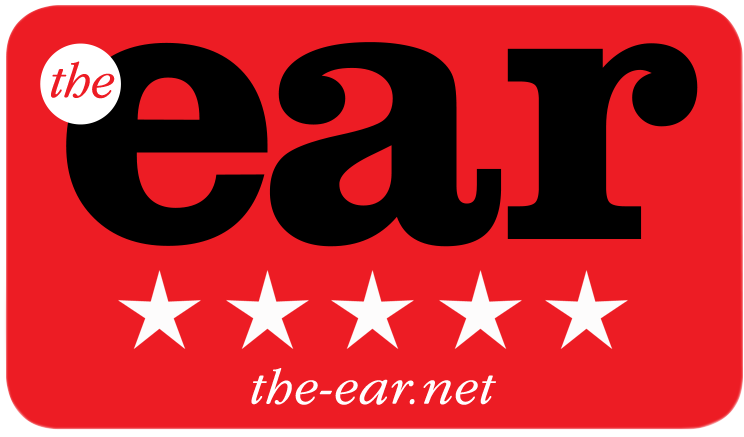Calypso Turntable
For out-and-out performance, this deck has all the attributes you could ask for. Strengths lie in superb transparency, timing, musicality, dynamics, and tangible soundstaging. Capable of outperforming much more expensive, respected decks, the Calypso MK5 is not going to disappoint you. Also, being neutral and system-friendly, it suits most applications very well.
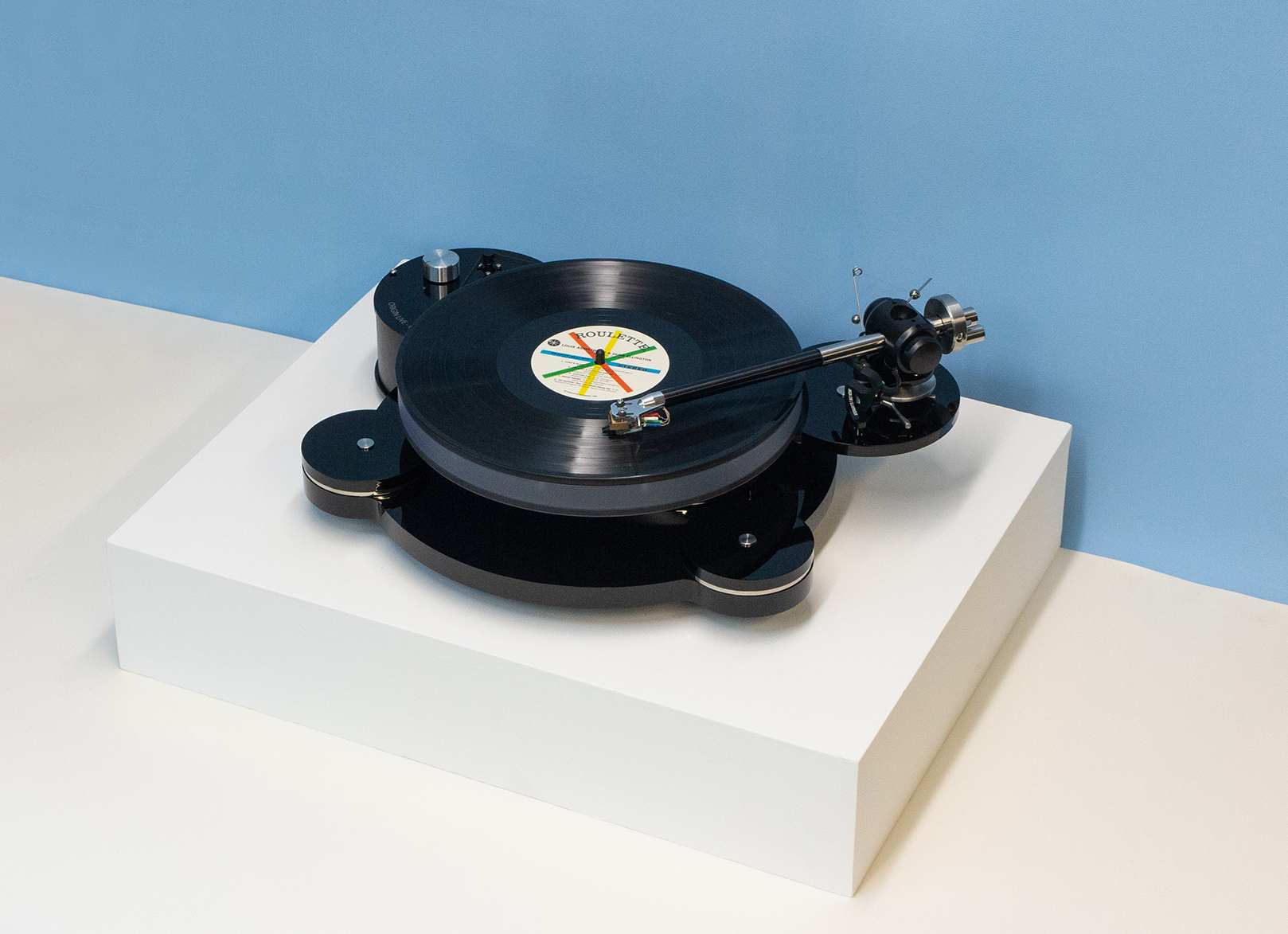
Calypso Turntable
For out-and-out performance, this deck has all the attributes you could ask for. Strengths lie in superb transparency, timing, musicality, dynamics, and tangible soundstaging. Capable of outperforming much more expensive, respected decks, Calypso MK4 is not going to disappoint you. Also, being neutral and system-friendly, it suits most applications very well.
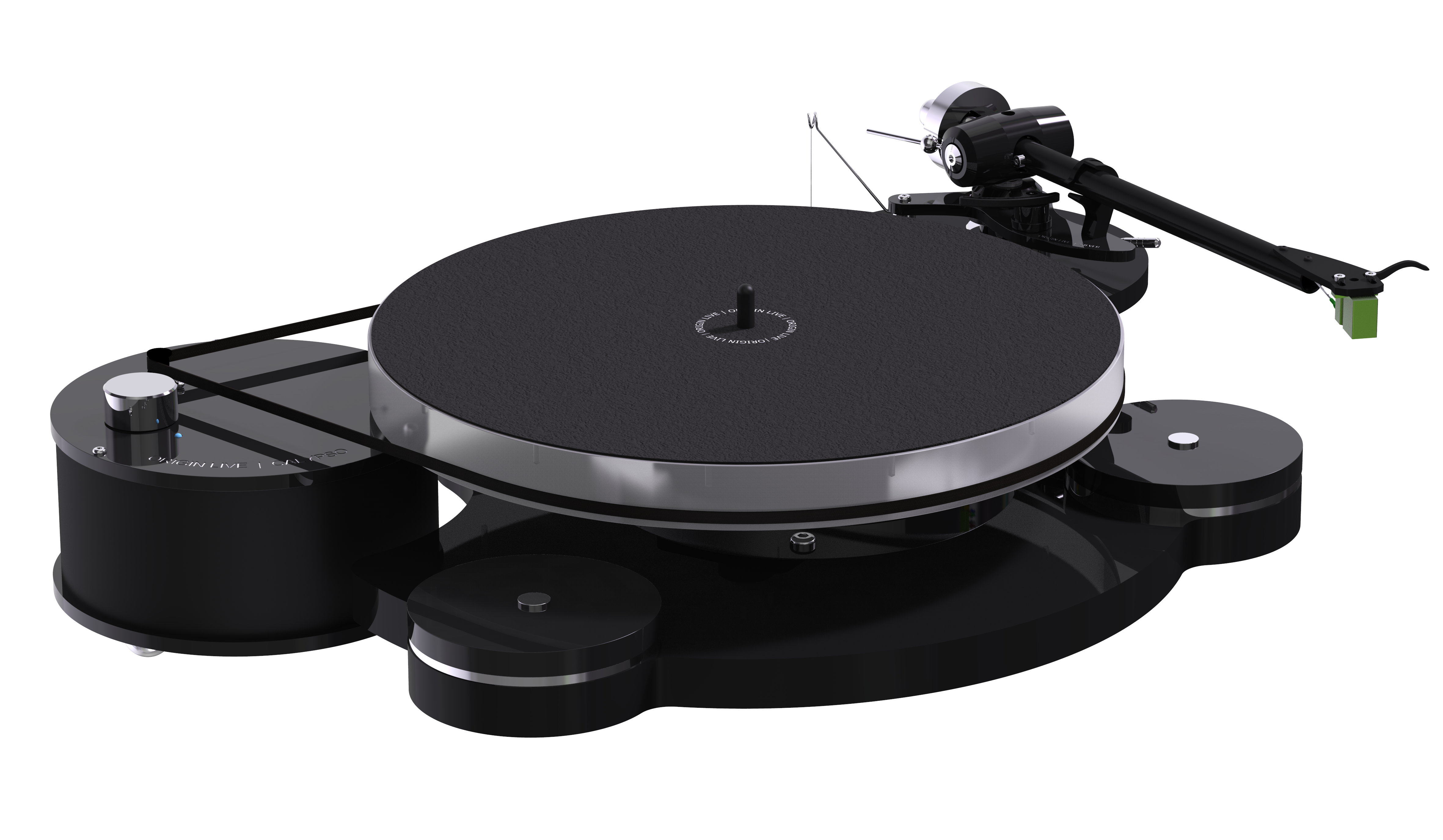
REVIEWS
“The Calypso Multilayer/Silver proves a really impressive performer. It has a big, spacious sound that’s strong on dynamics, involvement and tonal purity, with excellent detail retrieval.” Read the Full Review >
Hi-Fi Choice
“It is still a relatively modest package, yet it produced some of the very best sounds from vinyl that I have heard for a considerable while……. An Audio Excellence rating is amply deserved.” Read the full review >
Hi-Fi Critic
“…It will come as no surprise that I am totally smitten with this player. It is a permanent part of my system and I seriously doubt if there is a player out there that can beat it in terms of outright enjoyment and musical flow. And even in technical and audiophile terms, I’ve not heard a better performance than this.” Read the full review >
Hi-Fi Advice, Christiaan Punter
REVIEWS
“The Aurora MKII sets the musical and sonic standard for its price range. It is capable of communicating the intent of all kinds of music and of triggering the deepest and most exalted musical ecstasy. My wholehearted recommendation.” Read the full review >
Stereo Times
“Stellar performer with wonderfully realistic presentation… Enticing looks and celestial sounds… Superb attack, rigid bass, excellent dynamics, all of which means continually engrossing performances and edge-of-the-seat listening! …It looks like a star and sounds like heaven – a class leader in every respect…” Read the full review >
What Hi-Fi Group Comparison Test Winner
“The good news is the Aurora does not require a $3,000 cartridge to sound great. Coupled with the OL Silver MK IIIA tonearm and a budget cartridge I could be happy to live with it long term. It offers true high end sound at a reasonable price and has the ability to transport the recorded performance into your listening. I cannot part with it, so I purchased the review sample.” Read the full review >
TNT Audio
Features
Mk5 Motor Power Supply
The Mk5 Motor Power Supply introduces a new PCB in the PSU on all decks offering even more speed stability and improved sonic performance than the former Light Speed Controller. Common problems like speed drift, motor jitter and cogging are avoided. Speed settings for 33.33 and 45 RPM are operated through one knob with no need for belt/platter change.
DC100 Motor
These high-grade Swiss motors demonstrate the powerful, smooth-running needed in a good turntable motor. Ironless cores eliminate eddy currents which result in low “clogging”, low vibration and speed stability. Motors are decoupled to minimize vibration and reduce audible noise.
Belt
The belt is manufactured in house using special material which increases grip and reduces stretch under instantaneous loading, using a unique material which dramatically improves on widely used neoprene rubber – benefits include increased dynamics and deeper bass performance.
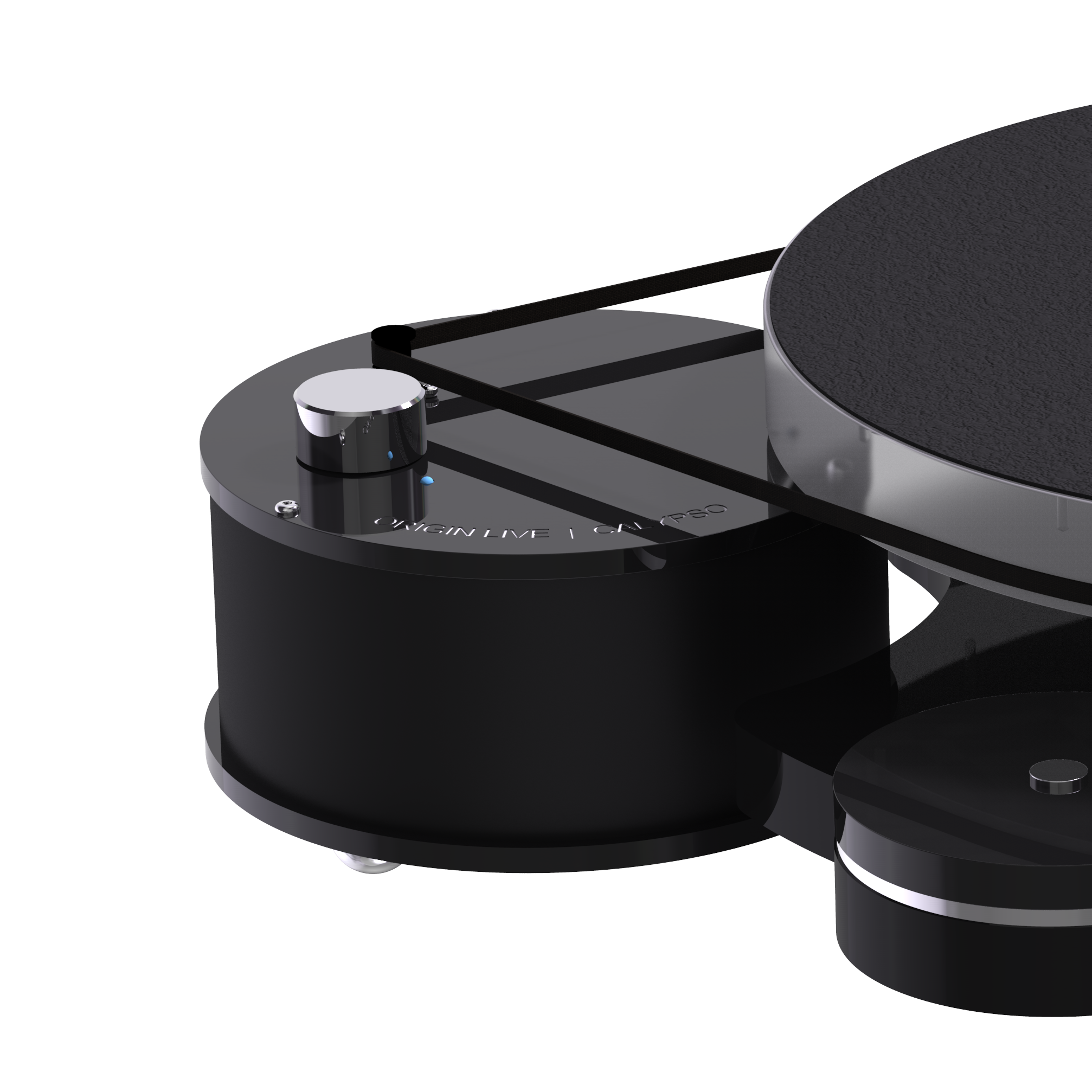
Features
Mk5 Motor Power Supply
The Mk5 Motor Power Supply introduces a new PCB in the PSU on all decks offering even more speed stability and improved sonic performance than the former Light Speed Controller. Common problems like speed drift, motor jitter and cogging are avoided. Speed settings for 33.33 and 45 RPM are operated through one knob with no need for belt/platter change.
DC200 Motor
The DC200 motor is smoother, quieter and double the power (Torque) of the Aurora’s DC100. You can hear more power in the music with bass gaining in slam, depth and resolution. Dynamics and resolution across all frequencies improve along with all other aspects of music. Ironless cores eliminate eddy currents which result in low “clogging”, low vibration and speed stability. Motors are decoupled to minimize vibration and reduce audible noise.
Belt
The belt is manufactured in house using special material which increases grip and reduces stretch under instantaneous loading, using a unique material which dramatically improves on widely used neoprene rubber – benefits include increased dynamics and deeper bass performance.

FEATURES CONTINUED
High Specification Power Supply
Carefully selected cables from premium suppliers are attached to motor circuitry that is designed to ensure the motor, the platter and your vinyl are running smoothly on a consistent power supply.
Pulley
A well researched special plastic pulley enables maximum belt grip, resulting in increased definition and dynamics.
Standard Armboard
Our standard armboard provides premium performance for the price point. Decoupled from the rest of the turntable, the armboard is balanced in equilibrium with the platter and bearing house.
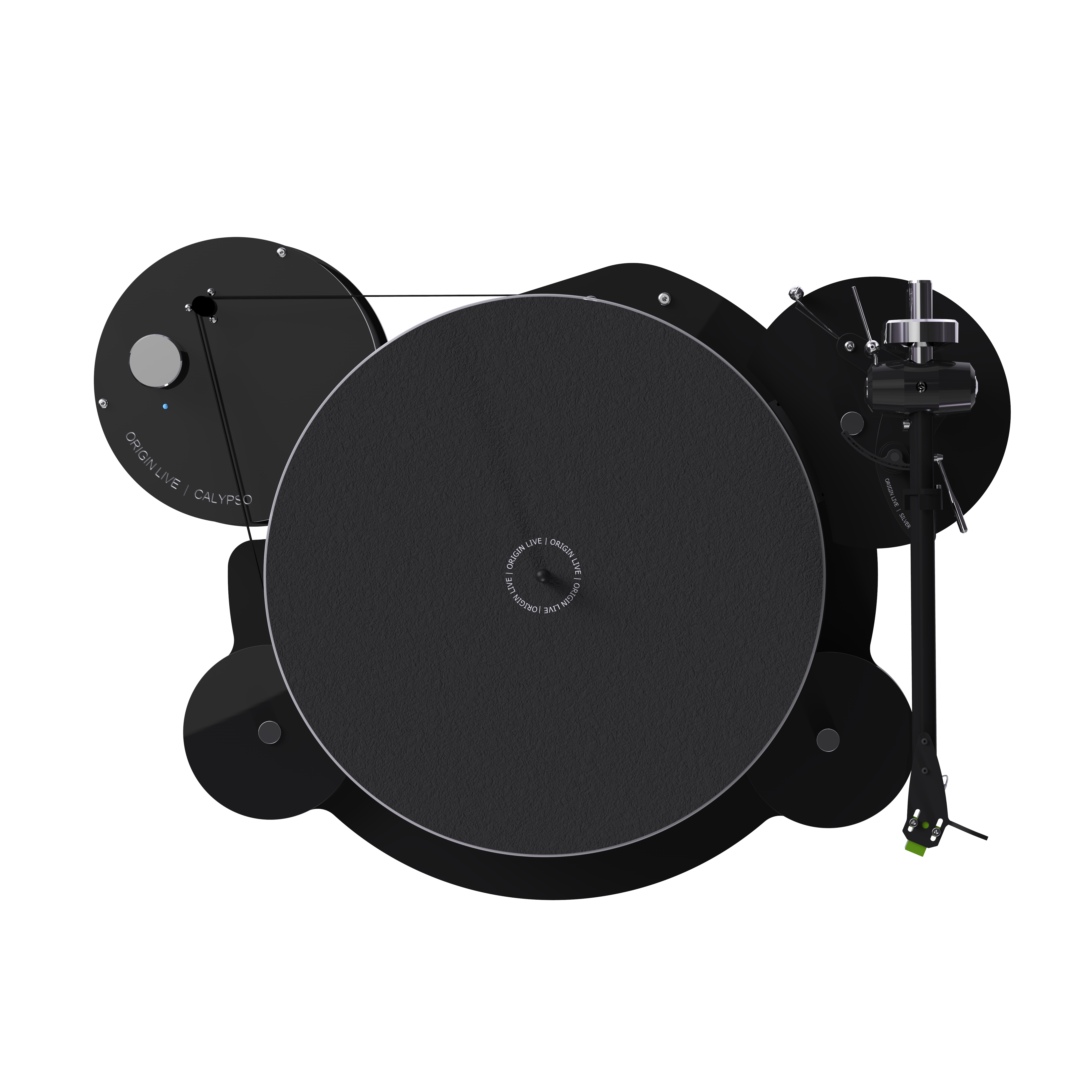
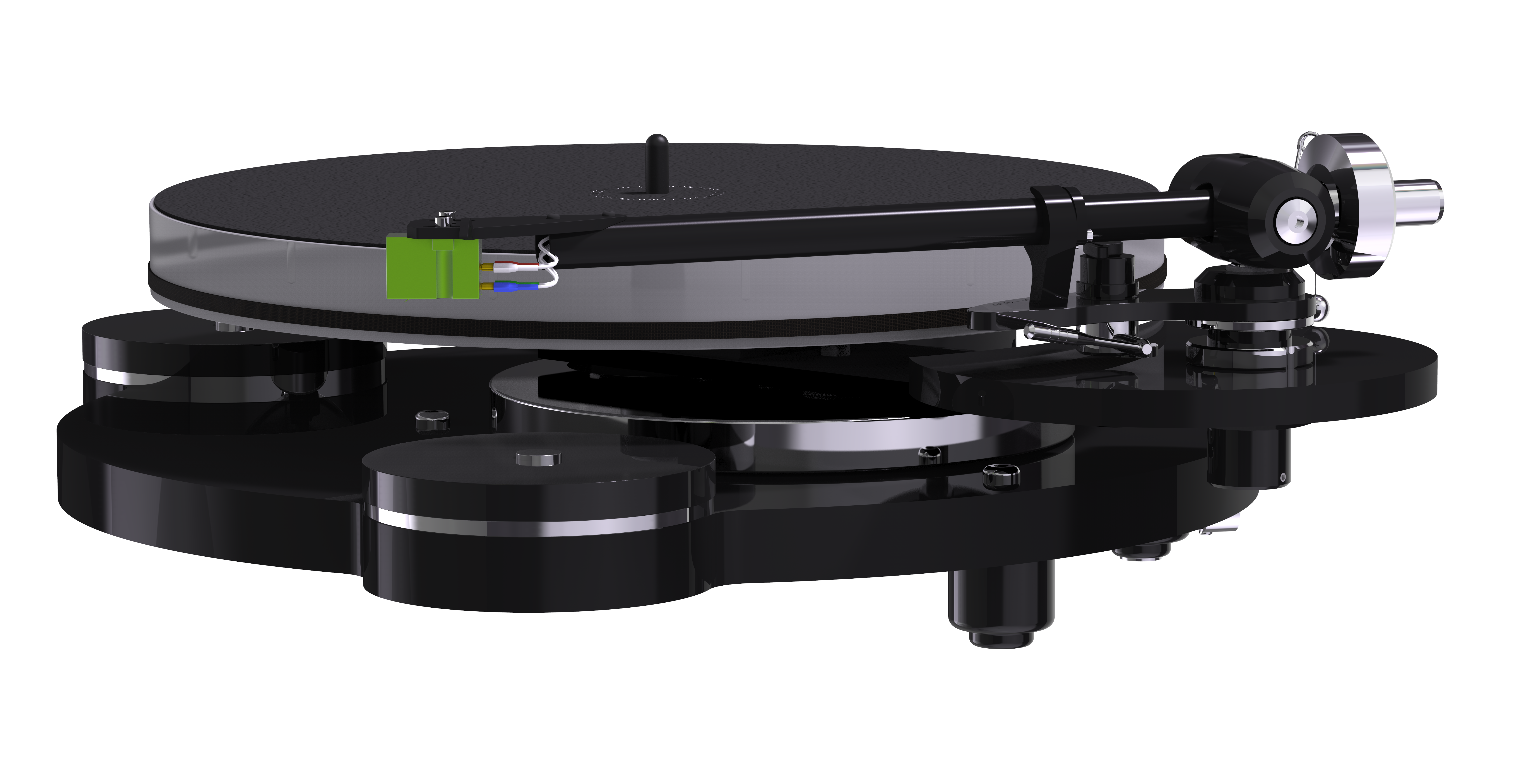
FEATURES CONTINUED
High Specification Power Supply
Carefully selected cables from premium suppliers are attached to motor circuitry that is designed to ensure the motor, the platter and your vinyl are running smoothly on a consistent power supply.
Pulley
A well researched special plastic pulley enables maximum belt grip, resulting in increased definition and dynamics over.
Standard Armboard
Our standard armboard provides premium performance for the price point. Decoupled from the rest of the turntable, the armboard is balanced in equilibrium with the platter and bearing house.

FEATURES CONTINUED
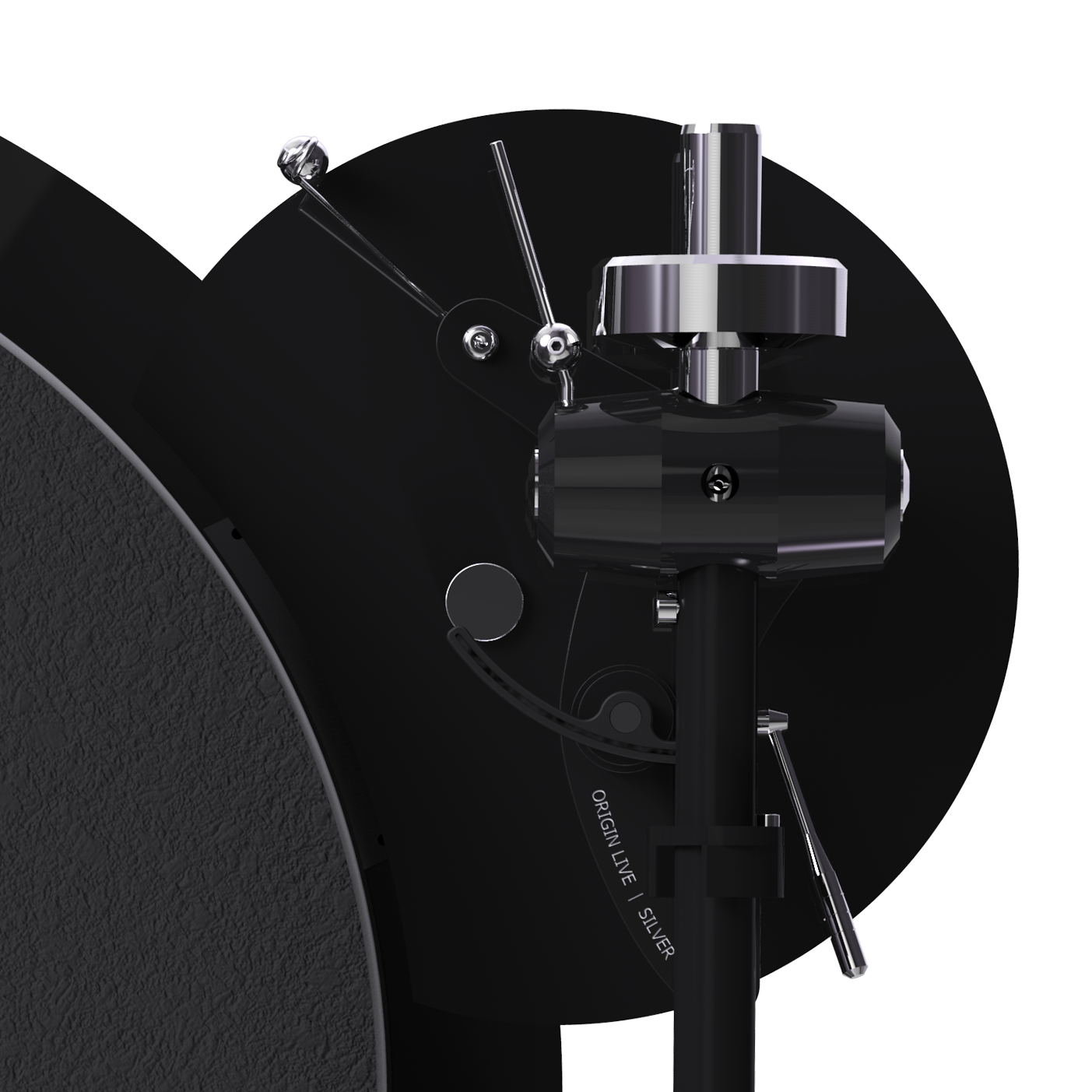
Ultra-low Friction Bearing
Made in house, the new MK4 bearing has ultra low levels of vibration. The spindle rotates on a Tungsten carbide ball bearing centered on a hardened thrust pad for low friction and long life. Low bearing friction is essential to avoid vibration. Unlike decks which “float” the platter using air or magnetic bearings, we believe “earthing” the energy out of the platter is essential for sound purity.
High Specification Sub-Chassis
The sub-chassis plate balances the armboard with the platter and bearing house, decoupling both from the turntable plinth. Its mass heavy design also helps to effectively damp vibration travelling through the armboard and platter.
Suspension
Our unique suspension avoids both the softening of leading edges often found in suspended designs and the hardness in many non-suspended designs. The results are:
- Superior pitch, rhythm, and timing
- Rock-solid imaging
- Reduced colouration
- Refined presentation of low-level information
- Easy to follow separation in the music and vocals
FEATURES CONTINUED
Suspension
Our unique suspension avoids both the softening of leading edges often found in suspended designs and the hardness in many non-suspended designs. The results are:
- Superior pitch, rhythm, and timing
- Rock-solid imaging
- Reduced colouration
- Refined presentation of low-level information
- Easy to follow separation in the music and vocals
High Specification Sub-Chassis
The sub-chassis plate balances the armboard with the platter and bearing house, decoupling both from the turntable plinth. Its mass heavy design also helps to effectively damp vibration travelling through the armboard and platter.
Ultra-low Friction Bearing
Made in house, the new MK4 bearing has ultra low levels of vibration. The spindle rotates on a Tungsten carbide ball bearing centered on a hardened thrust pad for low friction and long life. Low bearing friction is essential to avoid vibration. Unlike decks which “float” the platter using air or magnetic bearings, we believe “earthing” the energy out of the platter is essential for sound purity.
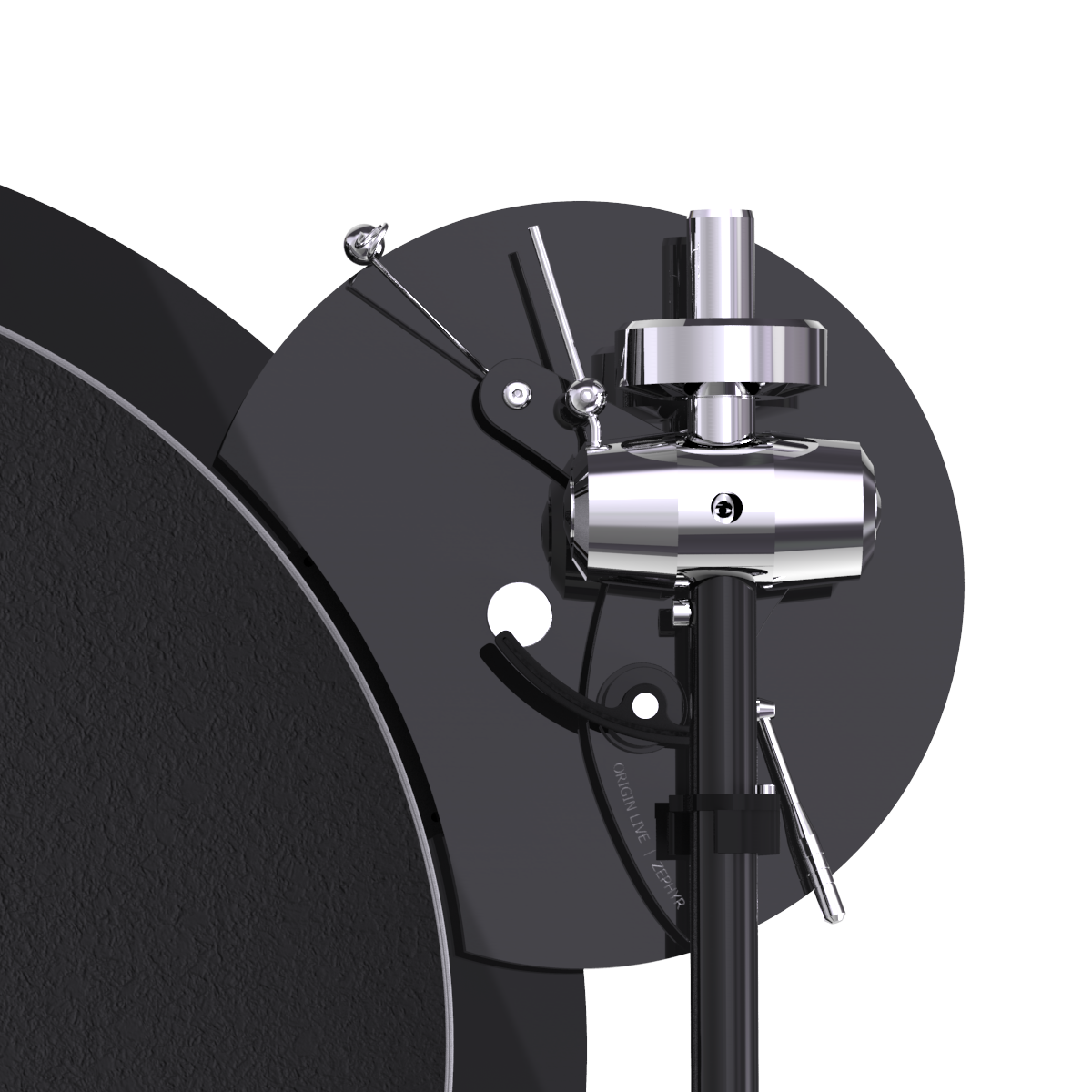
FEATURES CONTINUED
Heavy Inertia Disc
Pictured here beneath the arm board and platter, this stainless steel disc adds a large mass to the plinth, greatly reducing resonance. Placed at the point of its connection to the sub-chassis, this weighs down the plinth, effectively reducing vertical modes of vibration traveling across the plinth and into the sub-chassis. This minimizes any vibration that could travel into the platter or arm board to disturb your vinyl.
Front Loading Inertia Discs x 2
As well as the heavy inertia disc, these smaller inertia discs are positioned at the extremities of the plinth, where the plinth may be susceptible to vibration. The small inertia discs resist rotational forces arising from ground and airborne vibration. This maintains the plinths equilibrium and in turn the equilibrium of the whole turntable.
Suberb Styling
The Calypso’s circular forms evoke curving mid-century designs. The unmistakable profile and black polished finish make it an eye-catching asset for any decor.
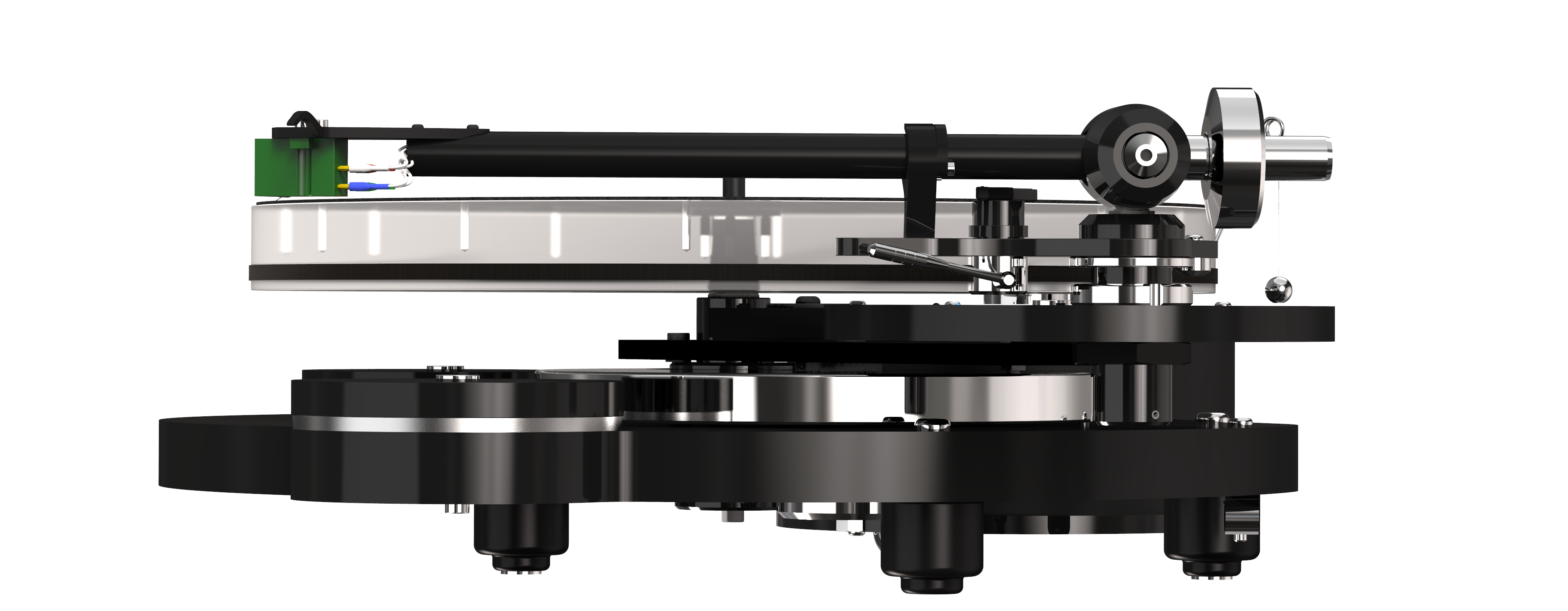
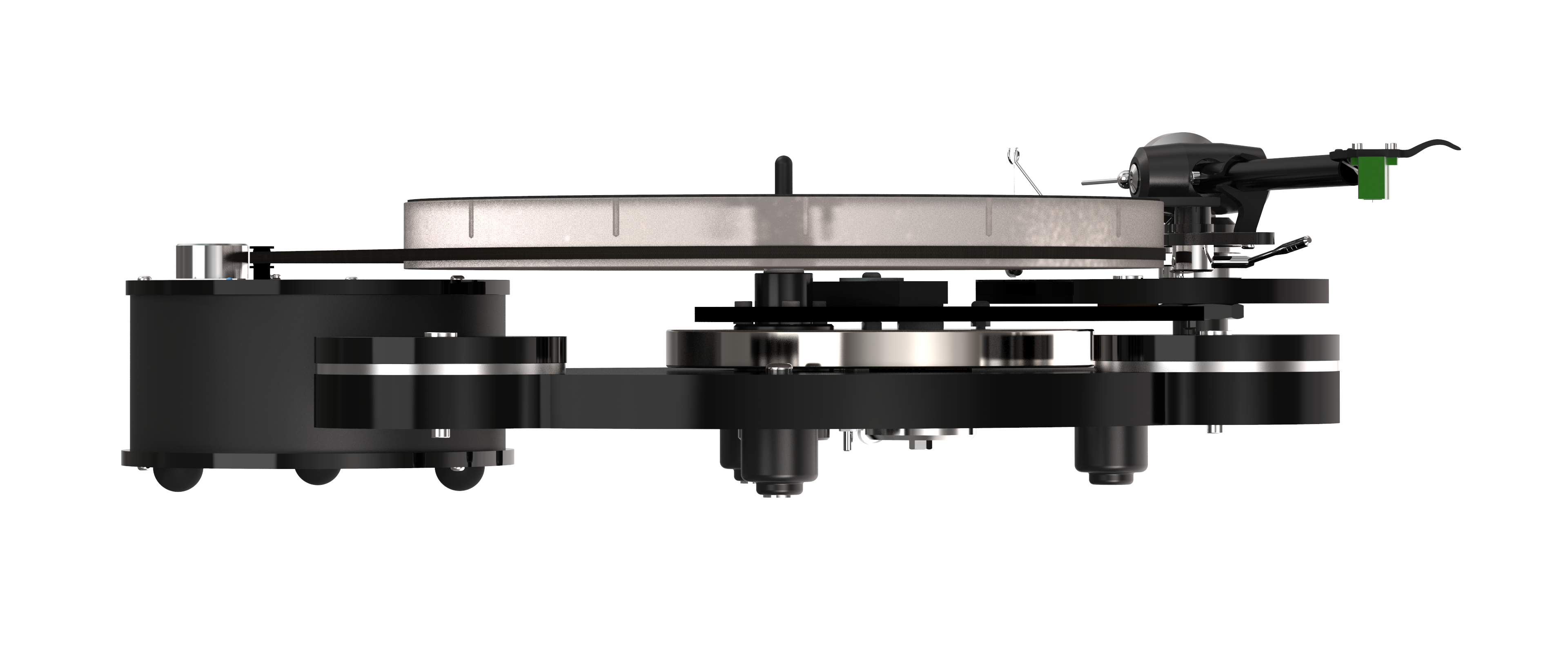
Compare Turntable Features
| TURNTABLE | Aurora | Calypso | Resolution | Sovereign | Voyager |
| Multi-layer Platter |
No | No | No | Yes | Yes |
| High Performance Armboard | No | No | Yes | Yes | Yes |
| Motor |
DC100 | DC100 | DC100 | DC100 | DC100 x 2 |
| Sub-Chassis Inertia Disc | No | Yes | Yes | No | No |
| Heavyweight Plinth |
No | No | No | Yes | Yes |
| Maximum Decouping on Main Bearing |
No | No | Yes | Yes | Yes |
| “Footprint” of deck & Minimum Dimensions of Support Surface (cm) (WxD) | 40 x 29 | 40 x 29 | 40 x 29 | 40 x 29 | 40 x 37 |
| Overall Size with 9.5 inch arm see top line (cm) (Width x Depth x Height) For 12 inch arms use lower line |
49x36x17 55x36x17 |
49x36x17 55x36x17 |
49x36x17 55x36x17 |
50x38x19 55x39x19 |
– |
| Weight (kg) | 10.3 | 11.5 | 12.1 | 28.4 | – |
| Shipping Dimensions (cm) (Width x Depth x Height) |
60 x 45 x 16 | 60 x 45 x 16 | 60 x 45 x 16 | 60 x 50 x 30 | – |
| Weight Packaged (kg) (Width x Depth x Height) |
12 | 13.3 | 13.9 | 32 | – |
Choosing Turntables
High Performance Turntables Produce the Ultimate Sound Quality
The record player still reigns supreme in terms of performance. Experts agree that leading turntables provide a more satisfying musical experience than any digital counterparts. Unlike digital streaming & CD, there seems no limitation on the musical information that turntables can extract from vinyl. In recent years, advances in some turntables have caused the gulf between digital performance and vinyl to widen even further. Origin Live draws together many long-established principles of high-end turntable design, along with advanced innovations, to reveal just how much the vinyl medium is capable of.
Why invest in a quality turntable?
If you are unfamiliar with Hi-Fi you may be unaware of the major sound quality differences between one turntable and another. There are over 800 different decks on the market. Faced with such a colossal choice, many buyers take the shortcut and assume “if it looks good, and has a good review, it must be good”. Unfortunately, nothing could be further from the truth. To its credit, the Hi-Fi press has long extolled the importance of a good turntable for high sound quality. If the source signal is degraded in the first place, everything else in the Hi-Fi Chain can only exaggerate the problem. It is important to choose your turntable based on its sound quality, which comes from its engineering and design.
Here at Origin Live, we make almost all of our components in our own workshop in the UK, this means we are in total control of the materials, quality control, and design of our products. You won’t find any chipboard, plywood, or flimsy components in these turntables. Using mass effective design in our bearing houses, plinths, arm boards and platters, all possible areas where jitter and vibration can be removed have been carefully considered. Through relentless development, we have selected materials that produce the natural, uninhibited tone from your vinyl.
Turntable Differences Are Greater Than Any Other Item Of Hi-Fi Equipment
CD players sound different to one another, but not a lot in comparison to turntables. Turntables have more influence on the sound of a system than almost any other item of Hi-Fi equipment and the differences between them are massive. A better turntable will improve the clarity, dynamics and ability to follow every strand of the music plus other aspects too numerous to mention. Gone is blurred, woolly bass and general confusion in the sound. Better turntables also have increased pitch stability adding a sense of sub-conscious sense of rhythm, security and confidence to your listening experience.
Rewards Of Higher Investment
A cheap £165 turntables will fall well short of CD performance, whereas a good £1500 turntable should outperform CD. The pursuit of the ultimate sound goes well beyond CD quality however. Turntables can improve a lot further with the right choices in equipment, and often this involves higher investment.
No one could blame you for being sceptical that a truly high-performance turntable is worth the investment. It’s usually only by hearing a direct comparison between two similar-looking decks, that the penny drops. The difference in musical cohesion, dynamics and ability to follow music effortlessly is simply jaw-dropping. It leaves one wondering how such massive differences can possibly exist when outward appearances can look so similar. Usually, this is down to materials, design and engineering. We explain further in our article: what makes the best turntable.
The conclusion is that it’s worth hearing turntable differences so you know what’s possible in terms of sound quality.
Warranty
All of our turntables come with a 5-year warranty against manufacturing defects. Accidental damage is not covered under this warranty. Tonearms are not included in the 5-year warranty.
Deciding On Your Priorities
Acquiring a good Record Player is a process that’s really worth getting right. Like buying a house, it’s going to be with you for a long time. There are many mediocre decks on the market with excellent reviews. This makes finding the best turntable all the more difficult. If you pay attention to every review that ends with words to the effect of ” worth adding to your shortlist”, you will end up with hundreds of turntables to audition.
It pays to evaluate your priorities in making your choice and the following provides a checklist of things to consider:
- Aesthetics – You probably want to like the look of your deck but it also needs to fit in with your decor or other Hi-Fi Components
- Sound Quality (should be very important for long term enjoyment and the differences are huge)
- Reliability – Some designs have far greater longevity than others due to better design. It’s difficult without naming specific manufacturers to identify the problems that arise and this is an aspect on which reviewers are unable to comment
- Upgradability – Some decks are much more difficult to upgrade and exchange than others. This is a complex subject but thinks in terms of changing arms or part exchange.
- Build Quality – Most manufacturers have little to differentiate between them in this aspect
- Size of the turntable – Will it fit the space available
- Set up – how easy is it to set up the deck?
- Servicing, maintenance and repair – Typically decks with suspension using springs and rubber grommets need regular servicing as the rubber compresses
- The speed may also need to be checked and adjusted due to belt wear. Service costs vary massively between turntables
- Popularity – A “safety in numbers” approach is sometimes valid but too many notable exceptions make this an unreliable benchmark
- Resale value – Linked to the above is re-sale value. Less well-known decks or those without spectacular endorsements and awards do not do so well on the 2nd hand market
- There is general advice on selecting products and apportioning your budget in How To Choose Hi-Fi


